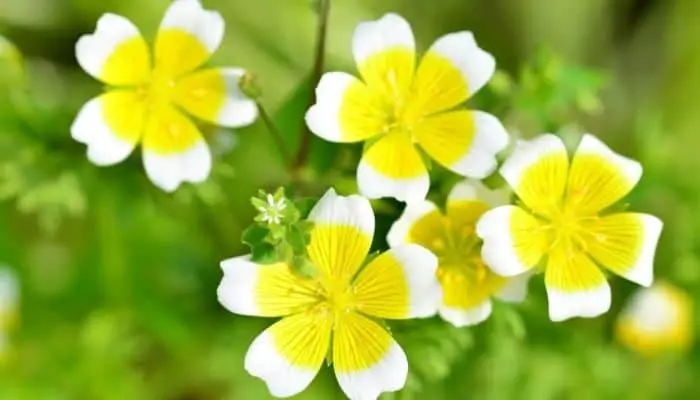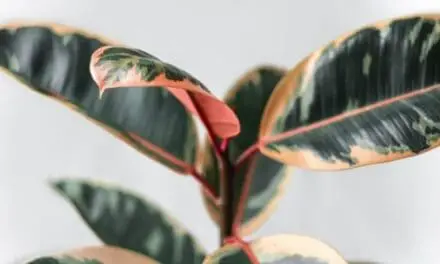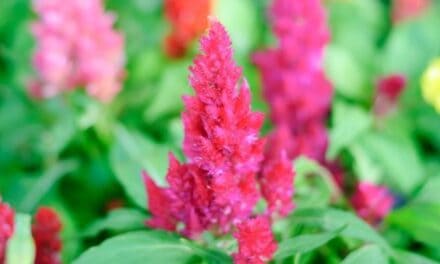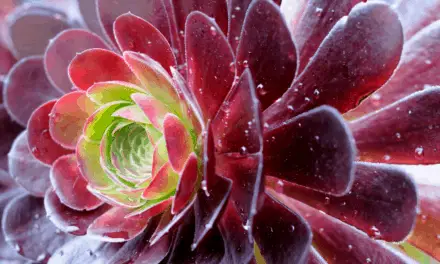Poached egg plants (Limnanthes) are extremely beautiful flowers that can help to protect other plants and vegetables against pests by attracting their natural predators.
They are also good for pollinators and brilliant to help out our bees.
Many people grow these plants just for their stunning flowers, which resemble vibrantly colored sunny-side-up fried or poached eggs.
Table of Contents
When Will My Poached Egg Plant Flower?

When your plant will flower can depend slightly on when you sow the seeds, but they generally flower between the spring and the summer.
Poached egg plants that are sown later in the year will flower later, which can give you a long flowering season if you space out the seeding.
What Time Of Year Do Poached Egg Plants Flower?
Poached egg plants can flower for long periods of time, especially if you stagger your sowing sessions to space out their flowering season.
If you sow them in March, you may see flowers as early as June to September.
They do not usually flower in the early spring or past the very early months of autumn, but they can flower for most of the hot season if you space their plantings out.
They produce a rich flush of flowers and can bloom with surprising vigor and energy.
They might not look like much, but they can bring a lot of color to your yard!
Related Article: Why Is My Flapjack Plant Curling? (And How To Treat It)
What Do Poached Egg Plant Flowers Look Like?
You might be able to guess if you look at the name – poached egg plants have flowers that look rather like poached eggs.
They have a bright yellow in the middle of their petals, with white on the outer edge.
They are somewhat similar to daisies, but the yellow is on the petals, rather than in the center, giving them a more blended look.
Lots of people love the cheerfulness of these beautiful flowers, and the plants are useful in other ways too.
What Makes Poached Egg Plants So Popular?
Poached egg plants are very popular in many gardens, and they are superb companion plants.
People plant them between rows of vegetables to help keep weeds away from the ground.
They have distinctive leaves so they are easy to pull up if they grow somewhere you don’t want them, and they are also easy-going.
You can transplant poached egg plants to better spots, or simply remove them and compost them.
Good For Pollinators
Poached egg plants are an extremely good source of food for many pollinators, including bees, hoverflies, ladybirds, etc.
And they are some of the best plants to have in your vegetable plot for pollination.
They Attract Pest Predators
The ladybirds attracted by poached egg plants are, of course, excellent predators for many pests that might be found in the garden, such as aphids.
They also attract these little hoverflies which are great for ridding your plants of aphids.
If you keep poached egg plants in pots, you can simply move them to where they are needed – near the source of the pest.
Soon, the predators should eradicate them and let your plant continue to grow.
They Reduce The Need For Pesticides
If you’re looking for a way to make your garden eco-friendly and beautiful, poached egg plants are an excellent step.
They will reduce the need for pesticides, and they are very good food for important insects.
Because you can stagger their flowering seasons, it’s easy to make sure there is food for months in your garden.
They are also very pretty.
Many people love the summery color of the flowers, and they are extremely easy to grow, so if you don’t have a lot of time to spend in your garden, they are a superb choice.
They Make Good Ground Cover
They will quickly grow to fill in empty spaces, but they are also easy to remove when you want to plant something different, or when their flowering has reduced.
Because they are low-growing, they also won’t crowd out other plants or flowers.
Poached egg plants only grow to about six inches at the most, meaning you can put them pretty much anywhere, without fear of them taking over or shading the things you want to grow.
Few vegetables will be bothered by them, and they will block out weeds that might encroach on your vegetable garden otherwise.
How To Plant Poached Egg Plants In Your Vegetable Garden
Poached egg plants attract predators that rid your vegetable garden of pests, so they are great to plant in and around your veggie patch.
Sow seeds in full sun and in well-draining soil.
Choose a little area of your vegetable garden (2ft × 2ft) and loosen the surface of the soil with a garden fork.
Once the soil is loosened up, mark out a little stone border around the area so that you don’t forget and dig it up again in the future.
Put a good sprinkling of seeds all around the area, cover them over with a thin layer of garden soil and give them a good watering.
Sow seeds between March and June for flowers between June and September.
Final Thoughts
Poached egg plants will usually flower during the hot parts of the year, often between April to August or September, although you will have to spread out your sowing sessions if you want to benefit from the extended growing season.
They are beautiful, much-loved plants that will benefit any garden and its wildlife!




